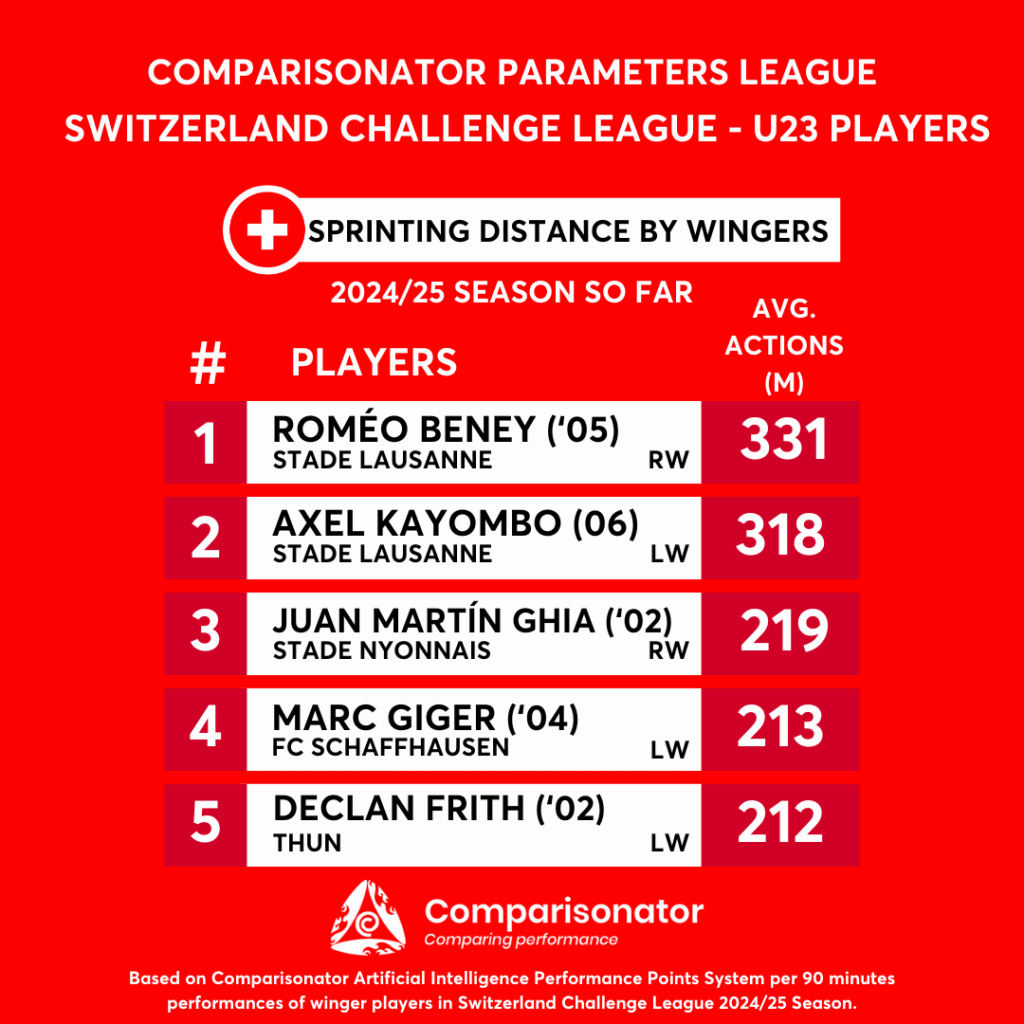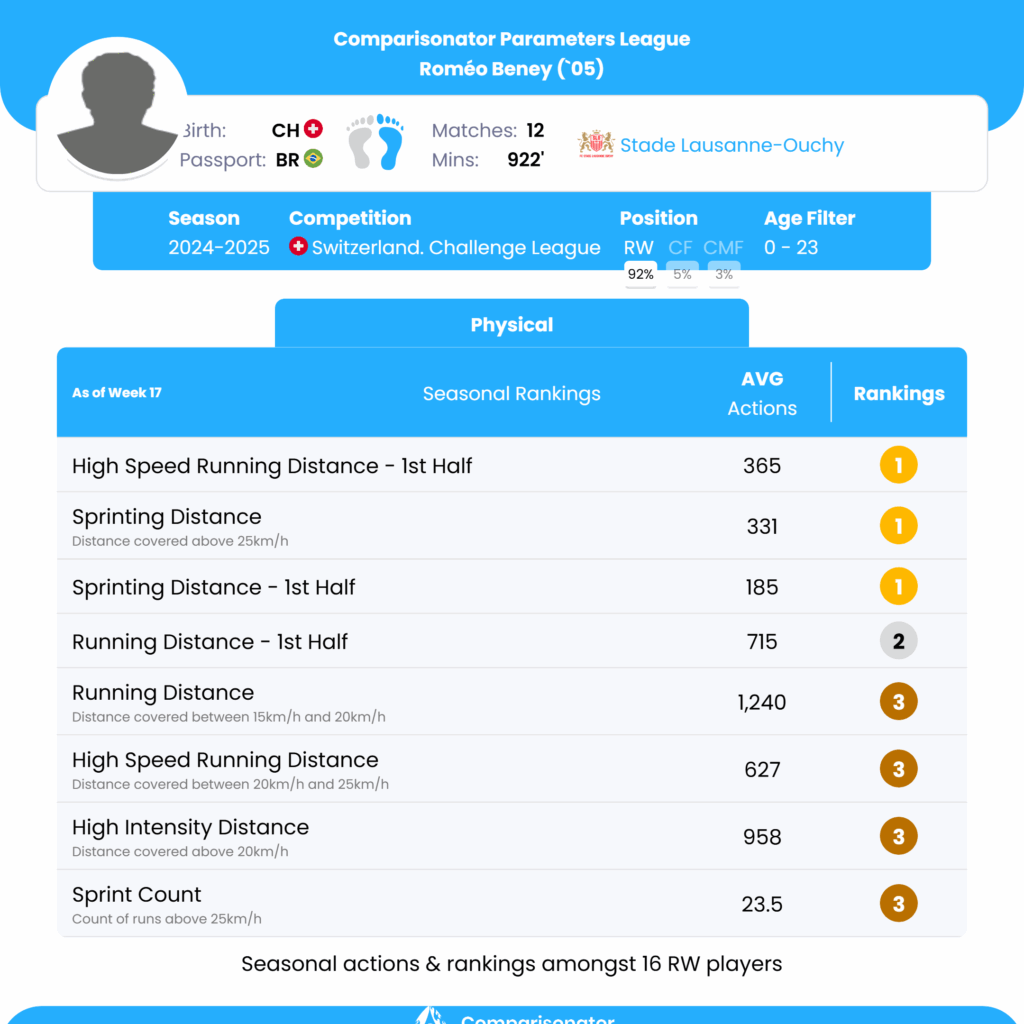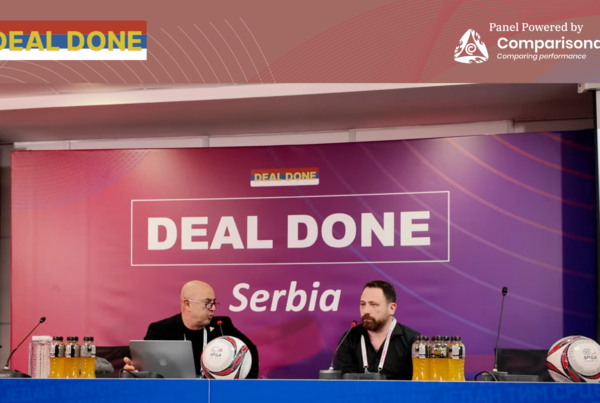As modern football continues to demand higher physical intensity, tracking player movement data has become vital for identifying top-performing talents. Using the advanced Comparisonator Physical Data Comparison Module, we’ve analyzed Switzerland Challenge to highlight the best U23 players in three key physical parameters for the 2024/25 season so far. This in-depth evaluation provides clubs, scouts, and analysts with a clearer picture of emerging athletes whose physical capabilities set them apart on the pitch.
In the High Speed Running (HSR) Distance category—measuring distance covered between 20-25 km/h—Mischa Beeli leads the way, showcasing his ability to maintain rapid movement in high-tempo game situations. Behar Neziri stands out in Running Distance, covering more ground than any other U23 player this season, underlining his stamina and work rate across 90 minutes. Meanwhile, Romeo Beney claims the top spot for Sprinting Distance, highlighting his explosive pace and frequent high-speed bursts exceeding 25 km/h.
These insights reflect the growing importance of physical metrics in modern scouting and recruitment processes. By leveraging Comparisonator’s trusted data engine, clubs can benchmark player performances with accuracy and context. The results not only spotlight Switzerland’s rising stars but also demonstrate how physical analytics can power smarter football decisions—whether identifying undervalued talent or building competitive squads. Stay tuned as we continue to uncover more data-backed standouts throughout the season.
Please note that all numbers are per 90 min data from the 2024/25 Season – So Far.
High Speed Running(HSR) Distance
Mischa Beeli’s CompaGPT Physicals report:
With an average of 315.9 meters, Beeli ranks first, ahead of Simon Geiger’s 265.88 meters. This reflects Beeli’s capacity for explosive pace early in matches, suggesting he can be effectively utilized to initiate quick counter-attacks and support offensive play. Beeli’s average of 133.5 meters places him at the top of this category, surpassing Ryan Kessler’s 114.02 meters. This showcases Beeli’s ability to engage in frequent sprints, making him a potent option for disrupting opposition defenses and driving forward from the back. Leading with 872.57 meters per match, Beeli stands out significantly compared to Malik Sawadogo’s 720.3 meters. This underscores Beeli’s high work rate and relentless pursuit on the field, highlighting his suitability for roles demanding high physical exertion and constant movement.
Mischa Beeli’s top-ranking parameters demonstrate his exceptional physical abilities, notably in high-speed running and sprinting, which are invaluable for both defensive coverage and offensive support. His sustained performance in the second half of matches indicates strong endurance and work rate. However, there are opportunities for improvement in overall distance covered and acceleration, particularly in the first half, which could enhance his tactical effectiveness and positioning.
Mischa Beeli (’04) (RB) – Vaduz
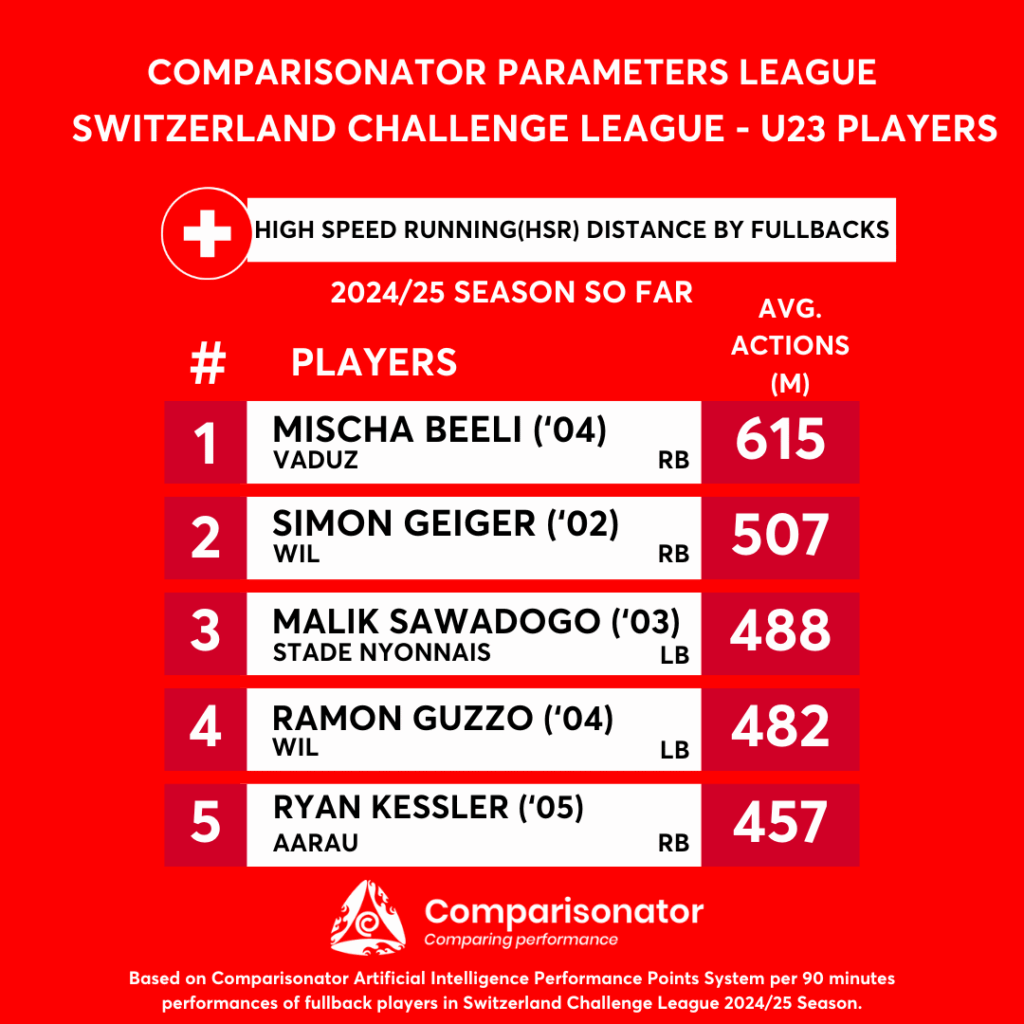
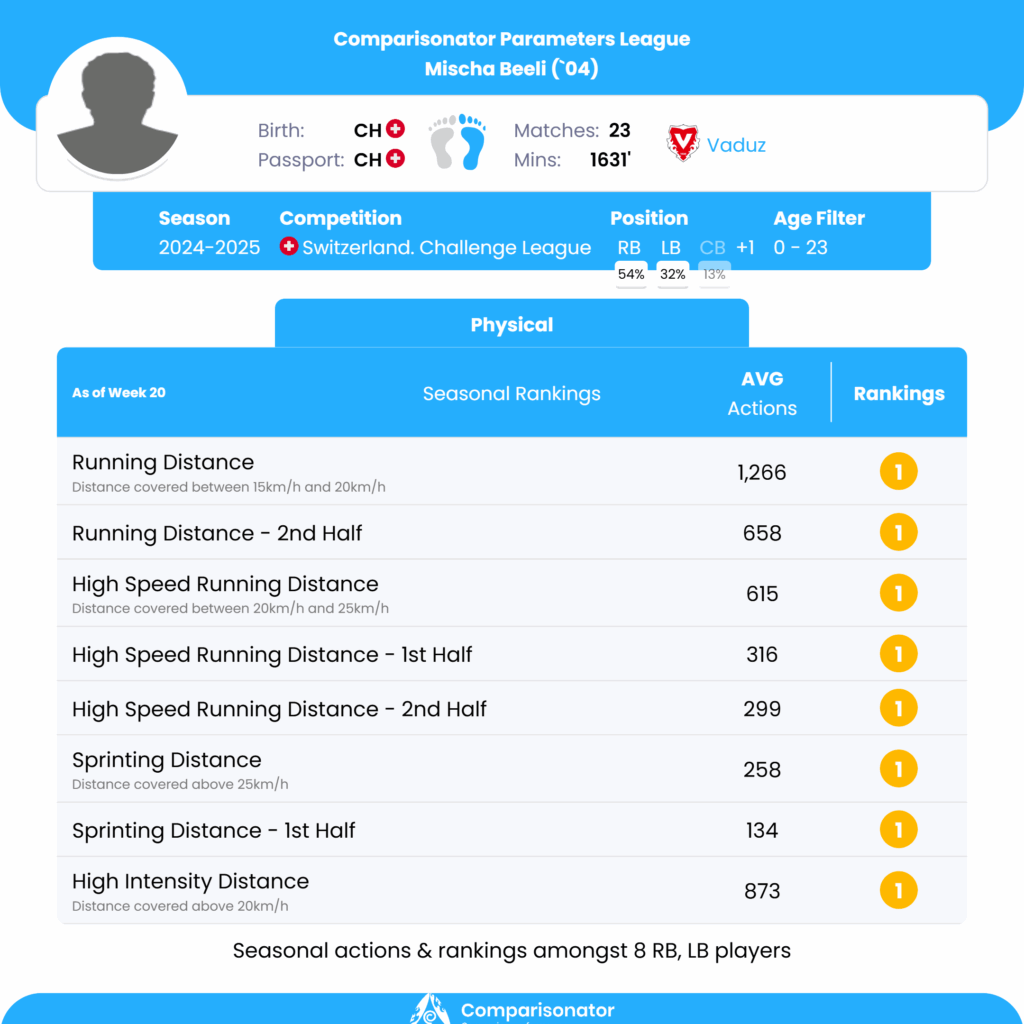
Running Distance
Behar Neziri’s CompaGPT Physicals report:
Behar Neziri ranks 1st in total distance covered, averaging 10,458.27 meters per match, surpassing Mauricio Willimann, who averages 9,960.02 meters. This indicates Neziri’s exceptional stamina and ability to maintain high physical activity throughout a match, making him a crucial asset for sustaining team pressure and covering significant ground. Tactically, he can be leveraged to close down spaces and support both defensive and offensive transitions efficiently. Leading with 856.79 meters of high intensity distance covered, Neziri surpasses Valmir Matoshi’s 839.19. This reinforces his capacity for sustained high-energy play, indicating a strong work rate and ability to contribute throughout the match duration, essential for high pressing styles.
Behar Neziri’s standout strengths are his total distance covered, medium and high acceleration counts, medium deceleration ability, and high intensity distance. These parameters highlight his exceptional physical prowess and adaptability, making him a vital component for teams employing high-pressure tactics and dynamic transitions. Despite minor weaknesses in second-half endurance and peak speed, Neziri’s physical attributes position him as a top performer in his role, providing tactical flexibility and consistent energy throughout matches.
Behar Neziri (’03) (DMF) – Wil
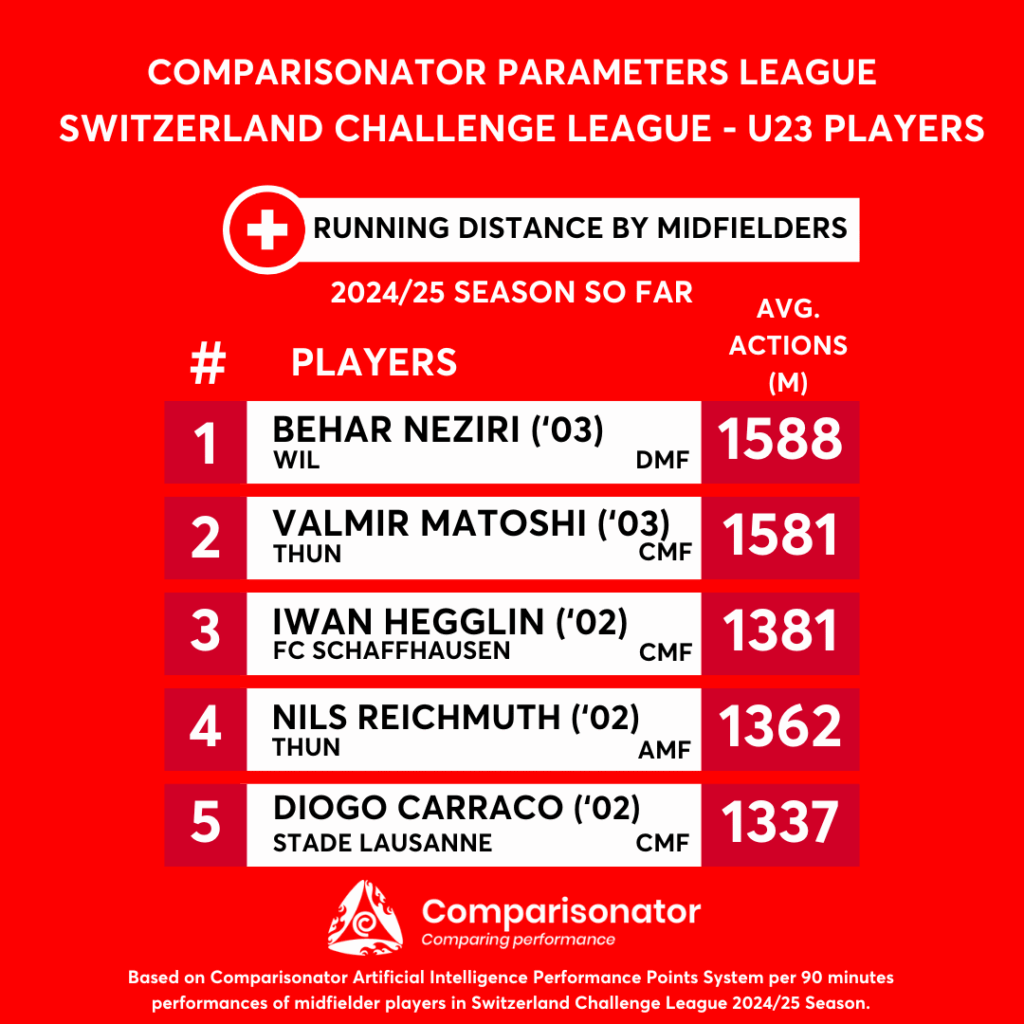
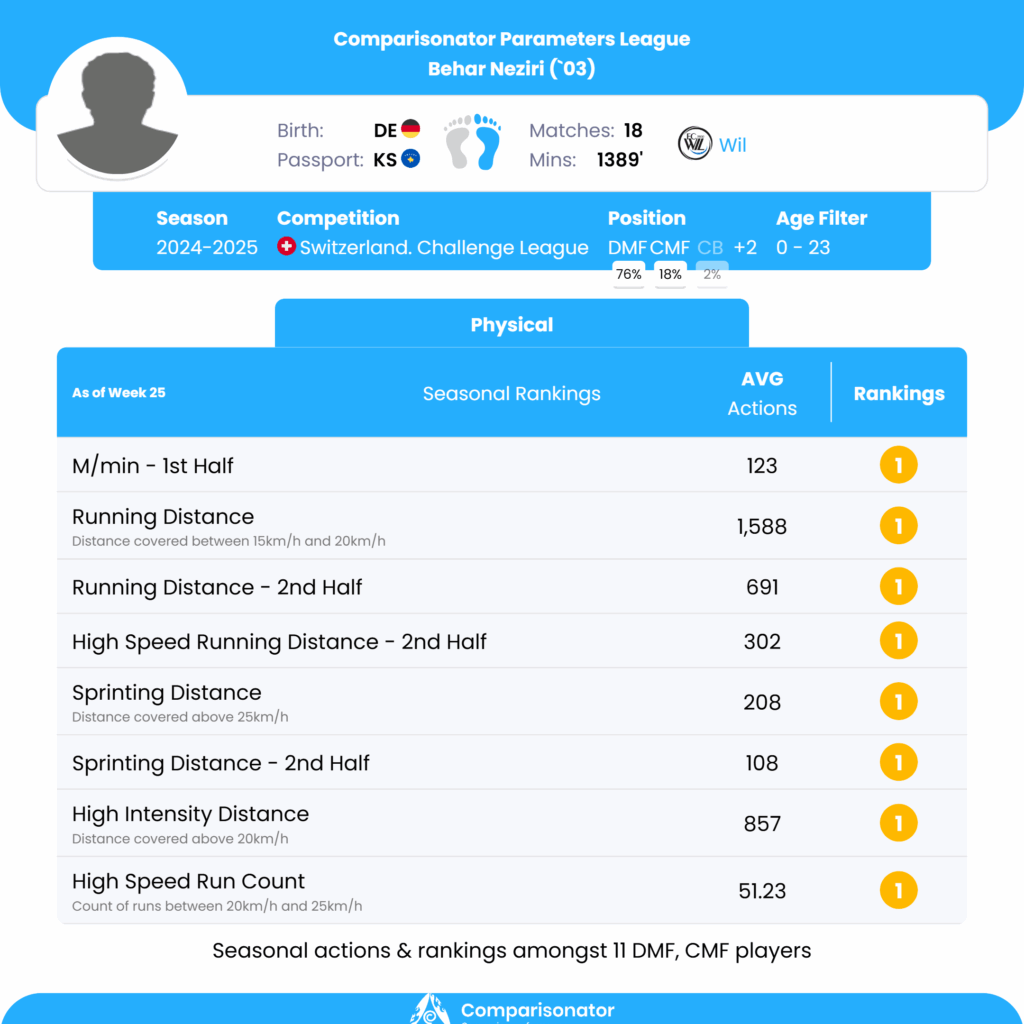
Sprinting Distance
Romeo Beney’s CompaGPT Physicals report:
Roméo Beney leads with an average of 365.47 meters per match, surpassing Marc Giger, who ranks second with 355.14 meters. This demonstrates Beney’s exceptional ability to maintain high-speed movement in the first half, suggesting his effectiveness in exploiting spaces and making aggressive runs early in the game. This capability can be strategically utilized to pressure opposing defenses and create early scoring opportunities. Beney is also recognized for high sprinting averages per match, with 330.92 meters and 627.2 meters respectively, placing him among the top performers in these areas. His capacity to engage in sustained high-speed play allows for tactical flexibility, enhancing counter-attacks and fast breaks during matches.
Roméo Beney exhibits strong performance in first-half physical metrics, particularly excelling in high-speed running and sprinting distances. His ability to maintain intensity early in matches is a notable strength, offering tactical advantages in initiating quick attacks and sustaining pressure. However, his overall match involvement and maximum speed present opportunities for growth, which can be addressed through targeted conditioning and speed drills. Beney’s top rankings in high-speed activities underscore his potential as a dynamic and aggressive winger, contributing effectively to his team’s offensive strategies.
Romeo Beney (’05) (RW) – Stade Lausanne
